Definition and properties
Let’s start by defining the word Austenitic; the online dictionary Free-dictionary defines the word as:-
‘An alloy of iron, usually containing at least 8 per cent of nickel and 18 per cent of chromium, used where corrosion resistance, heat resistance, creep resistance, or nonmagnetic properties are required.’
Stainless steels are various types of steel that contain a minimum of 10% added chromium and, in most grades, achieve their legendary resistance to atmospheric corrosion from a thin, self-healing surface layer of chromium oxide. If this oxide layer is damaged, by a scratch, for example, then there will take place a rapid regeneration of this layer, and this healing process will preserve the original corrosion resistance of the particular grade of stainless steel in use.
A harsh chemical environment might disrupt or delay the ability of this layer to reform, and this can lead to a state whereby corrosion can take place.
Stainless steel is resistant to atmospheric corrosion, but it is not immune to corrosion in all types of environmental conditions. The principal alloying elements in stainless steels are chrome and nickel. Chrome provides high corrosion resistance and additional strength. The nickel content provides durability and additional corrosion resistance.
Other elements can include manganese, carbon, and molybdenum and in some specific cases titanium or niobium are added to the formula. Adding titanium or niobium is usually for a highly specialised stainless steel. Molybdenum is added to the various formulas in various quantities to provide additional strength and resistance to chloride pitting.
The majority of stainless steel grades, of which there are over 100, fall into the following four classes:-
- Austenitic
- Ferritic
- Martensitic
- Duplex
These classes refer to the crystalline structure of the finished stainless steel.
Austenitic Stainless Steel will contain between 16% to 26% and up to 35% Nickel. Austenitic stainless steels are non-magnetic and include the 300 and 200 grades, and this consists of the world’s most common austenitic grade, 304, which is also the most commonly produced stainless steel.
200 series
The 200 series has a higher nitrogen and manganese content. These higher contents allows this grade a higher mechanical strength than the 300 series. Although the 200 series is harder than the 300 series unfortunately this grade of stainless steel does not have the same ability to stand up to corrosion as the 300 series.
- 200-series steels use manganese as a substitute for some of the nickel used in the production of stainless steel, this is done purely as a way to save cost and to produce a cheaper product.
- Stainless Steel Grade 201 contains about 17% chromium, 6.5% manganese, and 4% nickel. It has corrosion resistance very similar to 301.
- A significant benefit of the 200 series is that it is more economical to produce due to the product’s lower Nickel content. Nickel’s price fluctuates on a daily basis, the higher the nickel price, the higher the stainless steel will be priced.
- 200 series stainless steel is used commonly in the appliance, automotive, beverage equipment as well as internal and non-critical exterior architectural projects.
300 series
The 300 Series of Stainless steels are all austenitic chromium-nickel alloys. They are non-magnetic stainless steels.
Type 301 stainless steel
- Type 301 stainless steel is relatively malleable and is ideal for formed products or products that need to be punched or drawn.
- Type 301 stainless steel will rapidly harden during mechanical working.
- Type 301 stainless steel possesses good weldability characteristics.
- Type 301 stainless steel has higher wear resistance and higher fatigue strength than 304 stainless steel. It is a very versatile stainless steel used in applications from wiper blade clips to structural parts in the marine and aircraft industries.
Type 302 stainless steel
- Type 302 stainless steel possesses the same corrosion resistance as the better known 304.
- Type 302 stainless steel also shows a higher strength than 304 because it contains additional carbon. The extra carbon does make it harder to weld.
- Type 302 is used to make, washers, springs, pressure vessels and hundreds of other items.
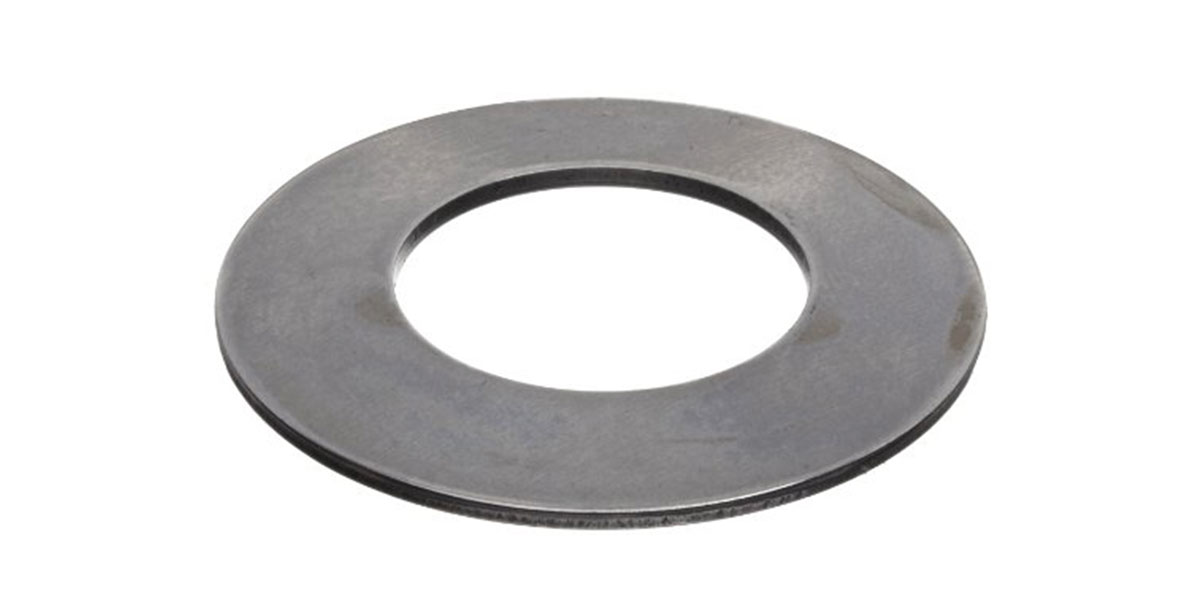
302 stainless steel Belleville spring washer on Amazon
Type 303 stainless steel
Type 303 stainless steel is designed to be a free machining version of 304. This property is due to the addition of sulfur and phosphorus, These additions increase the strength of the stainless steel, but they also make it harder to weld and a little brittle.
Type 303 is used to makes items ranging from nuts and bolts to gears and bushings.
Type 304 and Type 304L stainless steel
Type 304 stainless steel is the world’s most common grade; Also known as 18/8. Those numbers refer to the chromium content at 18% and nickel content 8%.
- Type 304 has thousands of everyday uses including cookware, sinks and cutlery.
- Type 304L stainless steel is chemically identical to the 304 grade described above, but it has a lower carbon content. This lower carbon content is designed to increase weldability.
- 304L is slightly weaker and less malleable than 304. It also has better resistance to corrosion.
- Types 304/304L are used to make exterior cladding panels, screws, food service items and thousands of other products.
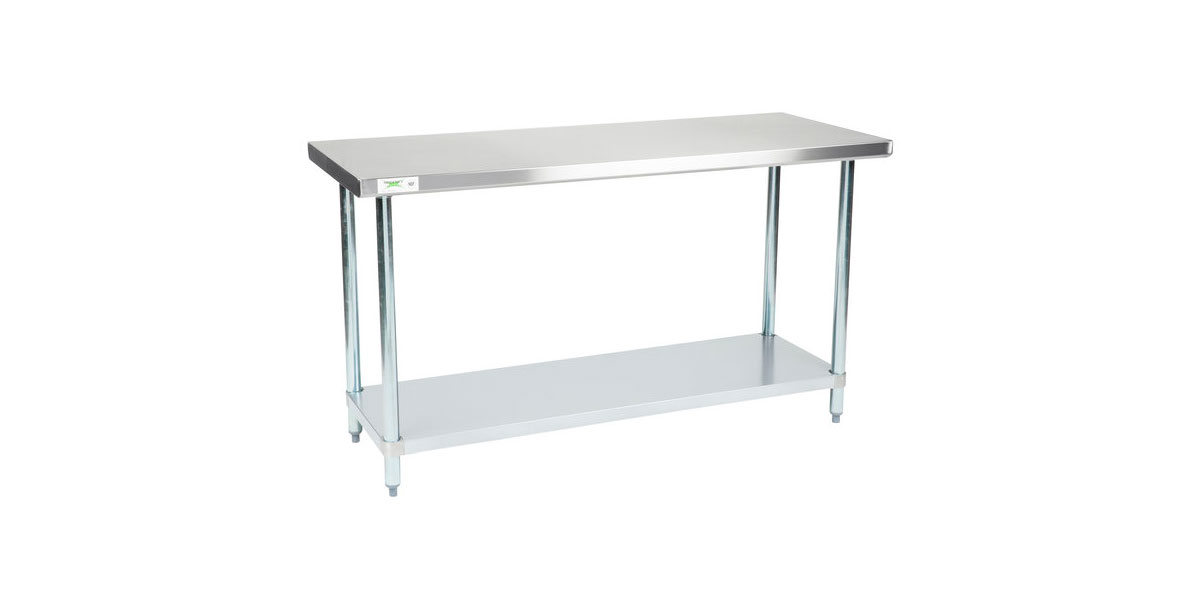
Stainless steel 304 work table by Webstaurant Store
Type 304LN stainless steel
Type 304LN stainless steel —same as 304L, but also has nitrogen added to obtain a much higher tensile strength than 304L.
Typical uses include railroad trucks, tankers parts.
Type 308 and Type 309 stainless steel
Type 308 stainless steel is used in welding rods to weld other grades of stainless steel. It is the used as the filler metal.
Type 309 stainless steel has a higher temperature resistance than 304 possesses. Type 309 is found in plate form for items needing to withstand high-temperature applications.
Welding rods containing 309 are used to weld together dissimilar steels, in conjunction with inconel. Inconel, if you were wondering , is an alloy of nickel that contains chromium and iron. Inconel is better able to cope with corrosion at high temperature.
Type 310 and Type 310S stainless steel
Type 310 and 310S stainless steels are a highly alloyed austenitic stainless steel used for high- temperature applications up to 1150°C.
Used in power stations, cement plants and other high temperature and corrosive applications
The high chromium and nickel content contained within the formula gives this stainless steel an excellent resistance to oxidisation as well as enabling the product to maintain its strength at high temperatures.
Type 316 and Type 316L stainless steel
Type 316 is the world’s second most common grade. Type 316 is also known as marine grade stainless steel and is due to 316’s increased resistance to chloride and salt compared to type 304.
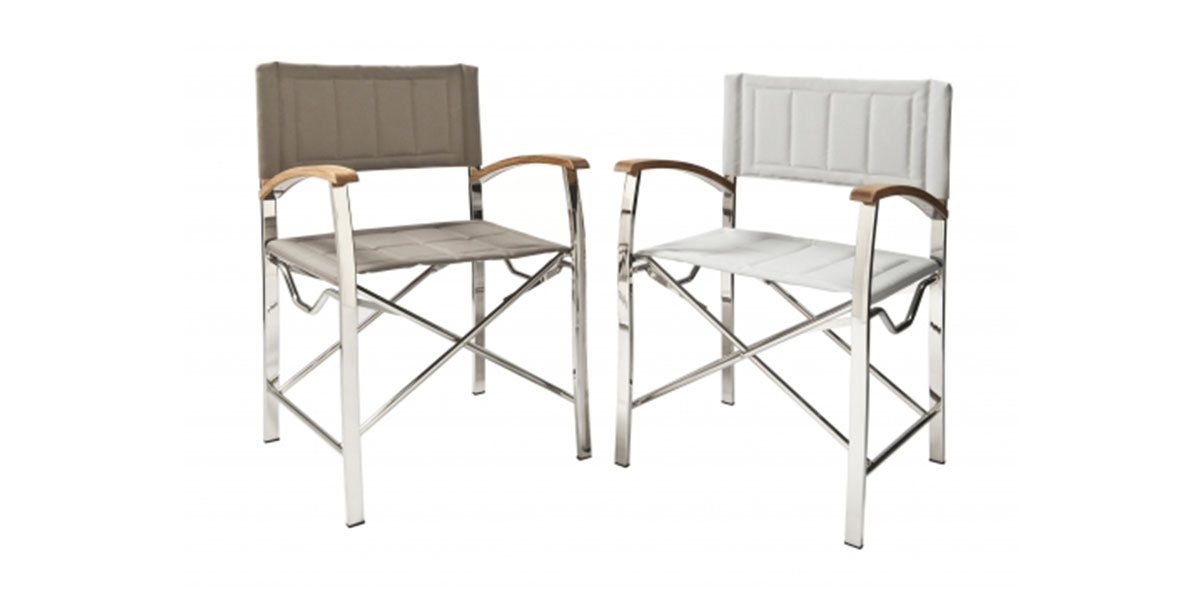
Yacht furniture – Stainless steel (grade 316) frame with teak armrests by Timage.
Type 316L is an extra low carbon grade of 316, and it is generally used in many applications, including the aforementioned marine applications. The L again stands for low carbon and gives 316L a better welding performance than 304.
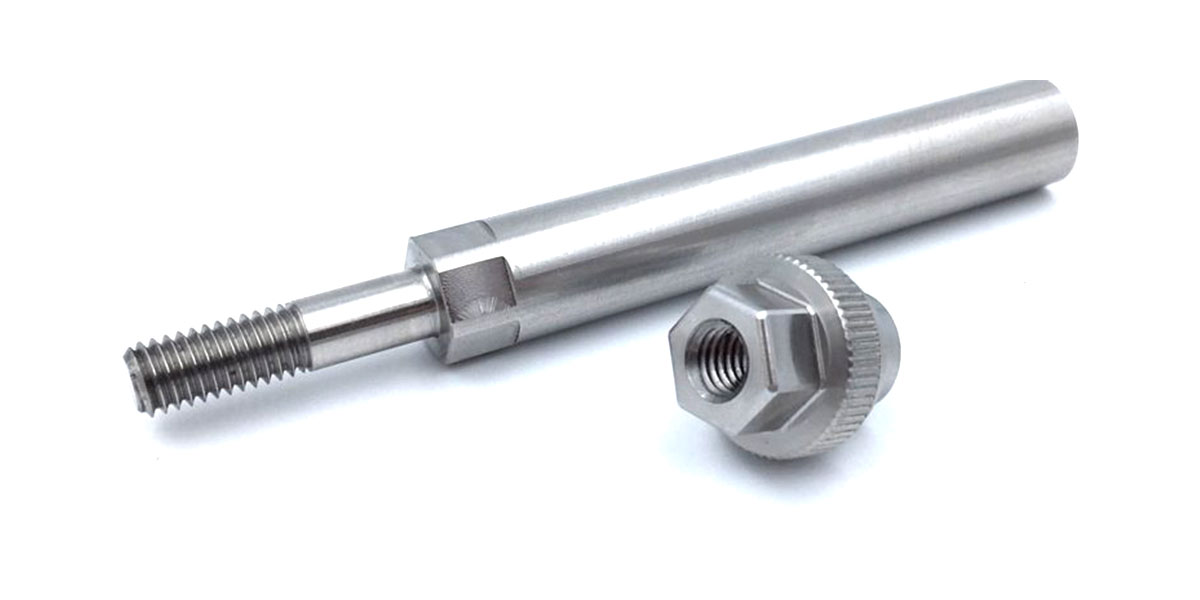
Custom 316L Machined Hardware – 6MM X 1.0M Thread & Straight Nurl Application On The Nut from Special Fastener Source
Types 316 and 316L is extensively used by many of the world’s top watch brands. It is a premium product and adds enormous value to the finished item. For example, Apple sells a range of stainless steel straps that cost $449 plus tax. More than many of the actual watches!
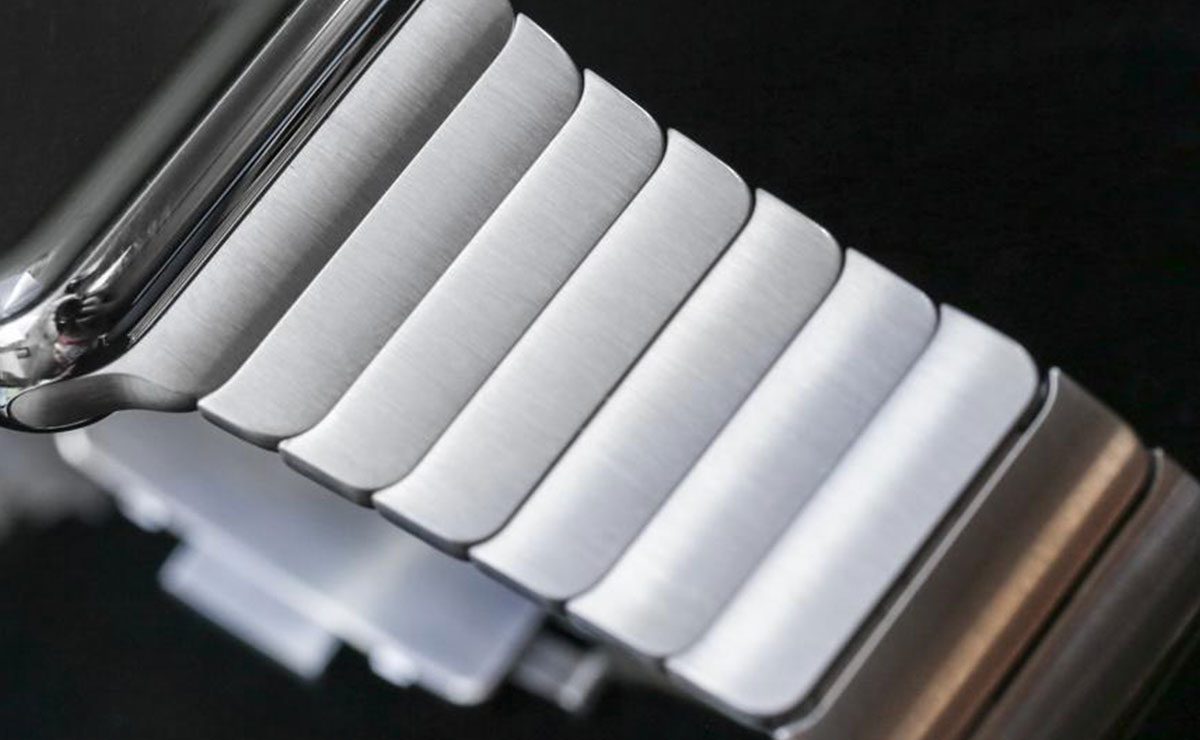
Watch wrist band by Apple in 316 stainless steel.
Architects appreciate all the valuable properties contained within 316 and 316L and specify both types for prestigious exterior and interior projects around the world. The Vessel, located in the Hudson Yard, New York City is the latest of these projects. 316 has added molybdenum which improves the stainless steel’s ability to resist acidic corrosion, which is one reason it so popular with the architectural community due in part to the resistance of the steel to pitting and corrosion.
400 series
- The 400 series of stainless steels were the first versions of stainless steel. These 400 grades contain a minimum of 11% chrome.
- The 400 ranges are magnetic and include the ferritic and martensitic grades that contain only chromium, making them less expensive than austenitic grades mentioned above.
- The 400 grades are known for a good surface finish making them acceptable for PVD coating and use in internal architectural projects.
- The 400 grades are generally more resistant to chloride attack than 300-series.
- 410 has 12% chromium added during production. Once heat treated, it becomes a martensitic grade. 410’s low chromium content provides modest corrosion resistance. prolonged exposure to weather will cause this grade to rust.
Duplex stainless steel
Duplex stainless steels are a small sector of the overall stainless steel market. They were designed to save cost on materials.
The duplex family of stainless steels are naturally at home in the oil refining sector, the chemical industry and any application where very corrosive conditions routinely found. The cost savings gained by using duplex stainless steels are driving their growth and use around the world.
For architecture and engineering of buildings
The various grades of stainless steels that are currently available to engineers, architects and product designers provide an enormous range of capabilities. As each of the various alloys has its advantages, and its own disadvantages it is essential to understand the type of product/building you are designing and use the correct grade of stainless steel.
Years of useful life will be added to a product or building by using the correct grade of stainless steel meaning that cost benefits can be passed on to clients allowing increases in budgets on other areas.
